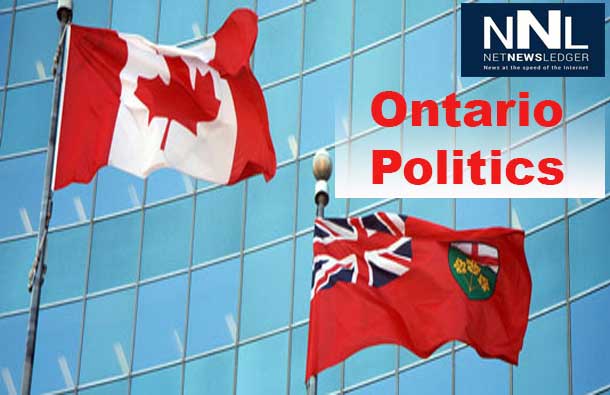
Economic Opinion – Ontario Behind Other Provinces
TORONTO – VANCOUVER – ECONOMICS – With Ontario lagging behind other provinces on a wide range of economic indicators and recently becoming a “have-not” province, it desperately needed a bold plan to improve competitiveness and foster economic growth. Unfortunately, Thursday’s budget failed to deliver and will only exacerbate Ontario’s fiscal and economic challenges.
Most importantly, the province needed a plan to rein in large budget deficits and growing government debt. That didn’t happen. In fact, the government explicitly deprioritized deficit targets and is now expecting this year’s deficit to be $12.5 billion – $2.4 billion higher (or 24 per cent more) than previously projected. The planned deficits for 2015/16 and 2016/17 also increased by $1.7 billion and $1.8 billion, respectively. Despite these set-backs the Ontario government still plans to miraculously return to a balanced budget in 2017/18 although details are slim.
Not only are deficits expected to be higher, the revenue and spending underpinning them are questionable. Finance minister Charles Sousa expects revenues to grow to $134.8 billion by 2017/18 from $115.7 billion in 2013/14– a $19.1 billion increase. This works out to 3.9 per cent average annual growth over the period. Is it possible? Maybe. But for perspective, revenue growth averaged 2.6 per cent annually in the previous three years (2011/12 to 2013/14).
On spending, Sousa expects to hold the line on annual increases. Program spending is slated to grow a meagre $3.0 billion to $119.4 billion in 2017/18 from $116.4 billion in 2013/14. In other words, program spending (without adjusting for inflation) will increase by just 0.6 per cent annually. How Sousa plans to achieve this is an open question in light of no major spending reductions announced in the budget. Ontarians deserve to see his math.
With growing deficits, government debt is also increasing. In fact, it’s projected to hit $324.5 billion by 2017/18 (almost 40 per cent of Ontario’s economy). Ontario’s debt has more than doubled since the Ontario Liberals came to power in 2003/04 when the provincial debt stood at $138.8 billion (or 27.5 per cent of the economy).
Rising government debt means growing debt interest payments. Debt interest payments are expected to hit $11 billion or 9.3 per cent of revenue in 2014/15. The government also estimates that interest payments will grow, on average, by 7.9 per cent over the next three years making them Ontario’s fastest-growing expense. By 2017/18, interest payments will consume nearly 11 per cent of government revenues.
As for the rest of the budget, the story isn’t much better.
The government’s plan to introduce a new tax rate of 18.97 per cent (including surtax) on Ontarians earning more than $150,000 and lower the income threshold for the top rate (20.53 percent) to $220,000 will exacerbate Ontario’s uncompetitive personal income tax regime. Once implemented, Ontario will have seven separate tax brackets with the combined top federal-provincial personal income tax rate a hair under 50 per cent, making it one of the highest taxed jurisdictions in North America.
The trend of raising taxes on Ontarians will undermine “the culture of innovation and entrepreneurship” that the government purports to support. And the tax hikes will especially hit workers that the modern economy relies on the most such as engineers, accountants, doctors, lawyers, and other professionals. As a result, the province will find it more difficult to attract and retain highly skilled individuals.
And for what? The tax increases likely won’t increase government revenues by as much as Sousa hopes. Ontarians will likely change their behaviour in response to higher rates. Workers may report less income, arrange their affairs through tax planning techniques to minimize their tax burden, change their working hours, or less aggressively pursue higher paying jobs.
The plan for a new “made-in-Ontario” pension program is similarly misguided. If implemented, the program could result in an additional 3.8 per cent payroll tax on Ontarians up to $90,000 which is almost double the current maximum of $52,500 under the Canada Pension Plan.
Payroll tax hike aside, the reality is that Canadians aren’t facing a looming retirement income crisis. A full accounting of all the resources available in retirement along with changing labour market patterns suggests this move is unnecessary. And it likely won’t increase overall retirement savings to the extent expected if Ontarians simply save less voluntarily in response to increased forced savings.
In sum, Ontario’s budget does nothing to improve the province’s economic competitiveness or the economic prospects for Ontarians. It simply pushes the province further in the wrong direction.
By Sean Speer
Charles Lammam
and Milagros Palacios
The Fraser Institute
Sean Speer, Charles Lammam, and Milagros Palacios are economists at the Fraser Institute.www.troymedia.com












